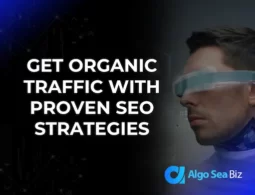Types of Social Media Ads
Ever scrolled through your social feed and stopped at a cool product or interesting story? That’s the power of a well-placed social media ad. Social media advertising has come a long way, evolving from basic banners to engaging videos. Today, there’s a whole array of ad types tailored for different platforms, each with its unique strengths.
I. Importance of Choosing the Right Ad Format
Choosing the perfect ad format is more than just about making it look good. It’s about resonating with your audience. The type of ad you select can play a big part in your campaign’s success. Think about it: if you want to showcase a new clothing line, a carousel ad might be better than a single image. But if you’re telling a brand story? A video can be more powerful. The trick is matching the ad type with your goals and the people you want to reach.
II. Facebook Advertising
a. Image Ads
Simple yet effective. Image ads are the classic ad format on Facebook. With a striking visual and compelling caption, these ads can drive traffic and pique interest. They’re great for highlighting a single product or sharing a special offer.
b. Video Ads
Got a story to tell? Video ads let you dive deeper. Whether it’s a short clip or a longer story, videos can grab attention and keep users engaged. From product launches to behind-the-scenes looks, video ads cater to a range of needs.
c. Carousel Ads
Want to showcase multiple products or tell a step-by-step story? Carousel ads let you display up to ten images or videos in a single ad, each with its link. It’s like giving your audience a mini, interactive catalog.
d. Slideshow Ads
Mix photos, videos, text, and even sound to create a lightweight slideshow. These ads are perfect for businesses that want the appeal of a video without the heavy production work. They’re mobile-friendly and can load quickly, offering a smooth experience.
e. Collection Ads
Shopping made easy. Collection ads allow users to discover, browse, and purchase products directly from their mobile device. When someone clicks on a collection ad, they’re taken to a visual shopping experience, making it a breeze for them to explore and buy.
As the world of social media grows, so do the ways in which we can reach audiences. By understanding and leveraging different ad formats, businesses can create compelling campaigns that resonate and drive action. The key is to choose wisely and always keep the viewer in mind.
III. Instagram Advertising
Instagram, the visual-centric platform, offers a range of ad types to make brands and products shine.
a. Photo Ads
The foundation of Instagram, photo ads capture moments and messages in a single image. Whether it’s showcasing a product or sharing a brand moment, these ads are versatile and direct.
b. Video Ads
Movement catches the eye. Video ads on Instagram allow brands to share more dynamic stories, from short clips to 60-second mini-films, offering a deeper connection with viewers.
c. Carousel Ads
Why stick to one image when you can share a series? Carousel ads let users swipe through a set of images or videos, great for showcasing a product line or a step-by-step story.
d. Stories Ads
Full-screen and immersive, Stories ads capture attention in between users’ personal stories. With options like polls or clickable links, they’re not just engaging but also interactive.
e. IGTV Ads
Longer content finds its home on IGTV. With IGTV ads, brands can monetize their content while also offering users in-depth videos, from tutorials to interviews.
IV. Twitter Advertising
Short, sweet, and to the point. Twitter ads help messages pop in a fast-moving feed.
a. Promoted Tweets
Just like regular tweets but with a boost. Promoted tweets appear in users’ timelines and can include text, images, or videos.
b. Twitter Cards
A richer experience. Twitter cards let brands attach media experiences to tweets, from photo galleries to app downloads.
c. Promoted Trends
Stay on top of the conversation. Promoted trends showcase a brand or product at the top of the Twitter ‘Trending Topics’ list, ensuring visibility.
V. LinkedIn Advertising
The professional network, LinkedIn offers ad types tailored to a more business-savvy audience.
a. Sponsored Content
Appear directly in the LinkedIn feed with Sponsored Content. This can be articles, videos, or other content that promotes a brand or product.
b. Sponsored InMail
Personalized and direct. Sponsored InMail sends private messages to targeted LinkedIn members, ensuring your message gets a dedicated space.
c. Display Ads
Traditional but effective. Display ads are the banners you see on the side, top, or bottom of LinkedIn, great for brand visibility.
d. Dynamic Ads
Tailored to the viewer, dynamic ads automatically personalize ad content based on user data, from their name to their job title.
VI. Snapchat Advertising
Snapchat’s ad offerings tap into a younger, mobile-first audience.
a. Snap Ads
Full-screen vertical video ads that play in between friends’ stories or other Snapchat content, offering a moment of engagement.
b. Story Ads
Brands can tell their narrative using a collection of photos or videos, showcased as a tile on the Discover page.
c. Collection Ads
Showcase a series of products. When users tap on a Collection Ad, they can view more details or even make a purchase.
d. Filter Ads
Get creative and fun. Filter ads are design overlays users can add to their snaps, perfect for events or special campaigns.
Each social media platform offers its unique ad formats, catering to its audience and the kind of engagement it promotes. For businesses, understanding these formats and picking the right one can make all the difference in a successful campaign.
VII. Pinterest Advertising
Pinterest, known for its visually rich boards, allows brands to advertise in a way that feels organic to the platform’s user experience.
a. Promoted Pins
Just like regular pins, but with a little extra visibility. Promoted Pins blend seamlessly into the user’s feed and can be saved, re-pinned, or clicked, leading them straight to your website.
b. Shopping Ads
Turning browsing into buying. Shopping Ads showcase products in a way that makes them easy for users to spot and buy, all directly from Pinterest.
c. Carousel Ads
A visual journey. Carousel ads on Pinterest let brands feature multiple images in a single ad. Users can swipe through these images, each having its unique link, making it great for featuring a product range or telling a brand story.
VIII. YouTube Advertising
As the second largest search engine, YouTube offers a variety of ad formats tailored for the video-centric platform.
a. Display Ads
These ads show up on the right side of the feature video and above the video suggestions list. They’re visual and can help capture attention.
b. Skippable & Non-skippable Video Ads
Skippable ads allow viewers to skip ads after 5 seconds, while non-skippable video ads must be watched before the video can be viewed. Both appear before, during, or after the main video.
c. Bumper Ads
Short and sweet. Bumper ads are 6 seconds (or shorter) and are played before the viewer’s chosen video, ensuring your message is quickly delivered.
d. Sponsored Video Ads
These are promotional videos that appear in the YouTube search results, helping to capture attention right where users are searching.
IX. The Art of Retargeting
Imagine showing an ad specifically to someone who’s visited your website or checked out your product but didn’t make a purchase. That’s retargeting.
Introduction to Retargeting and its Importance:
Retargeting, or remarketing, is a technique where ads target users based on their past actions online. It’s crucial because it focuses your advertising spend on people more likely to convert or make a purchase. It’s like a gentle reminder, nudging them back to your site.
Discussion on how different platforms support retargeting with their ad formats:
Almost all major social media platforms, including Facebook, Instagram, and Twitter, have features that support retargeting. They use data like website visits, app usage, or even email interactions. For example, with Facebook’s pixel or Pinterest’s tag, businesses can track users’ actions on their sites and then serve targeted ads on these platforms.
Choosing the right ad type and combining it with effective strategies like retargeting can amplify a brand’s reach, ensuring messages are seen by the right eyes and, more importantly, the eyes most likely to take action.
X. 5 Common Q&As About Social Media Ads
Q: Why is choosing the right social media ad format crucial for campaigns?
A: The right ad format can effectively convey the message, resonate with the target audience, and lead to higher engagement and conversion rates.
Q: Can I use the same ad format across all social media platforms?
A: While some ad formats are common across platforms, each social media site has its unique formats. It’s essential to tailor ads according to the platform to get the best results.
Q: How do I decide on the best ad format for my campaign objectives?
A: Your campaign objectives, whether awareness, engagement, or conversions, can guide the choice. For instance, video ads are great for brand storytelling, while carousel ads can showcase multiple products for e-commerce businesses.
Q: Are video ads more effective than image ads?
A: It depends on the audience and the platform. While video content is generally engaging and can convey more information, image ads can be equally effective when they have compelling visuals and copy.
Q: How important is it to incorporate retargeting with my social media ads?
A: Retargeting is crucial as it allows you to reach users who’ve already shown interest in your brand or product. It increases the chances of conversions by reminding potential customers about their previous interactions with your brand.
XI. Conclusion
Today’s digital landscape offers businesses a buffet of ad formats to choose from. From Pinterest’s Shopping Ads to YouTube’s Bumper Ads, each platform presents unique ways to capture the attention of their vast user bases. Remember, the perfect ad doesn’t just look good; it connects with the viewer and aligns with the goals of the campaign. It’s like fitting pieces of a puzzle together. Your audience, your message, and the platform all need to click into place. And the format you choose plays a significant role in this.
So, don’t be afraid to mix and match. Test different formats, measure results, and adjust as needed. The digital world is all about adaptability. Your perfect ad format is out there, waiting to be discovered. Ready to dive in? Experiment, learn, and find the best ad types that resonate with your audience. Your brand story deserves to be told in the best way possible. Start crafting your narrative today!








